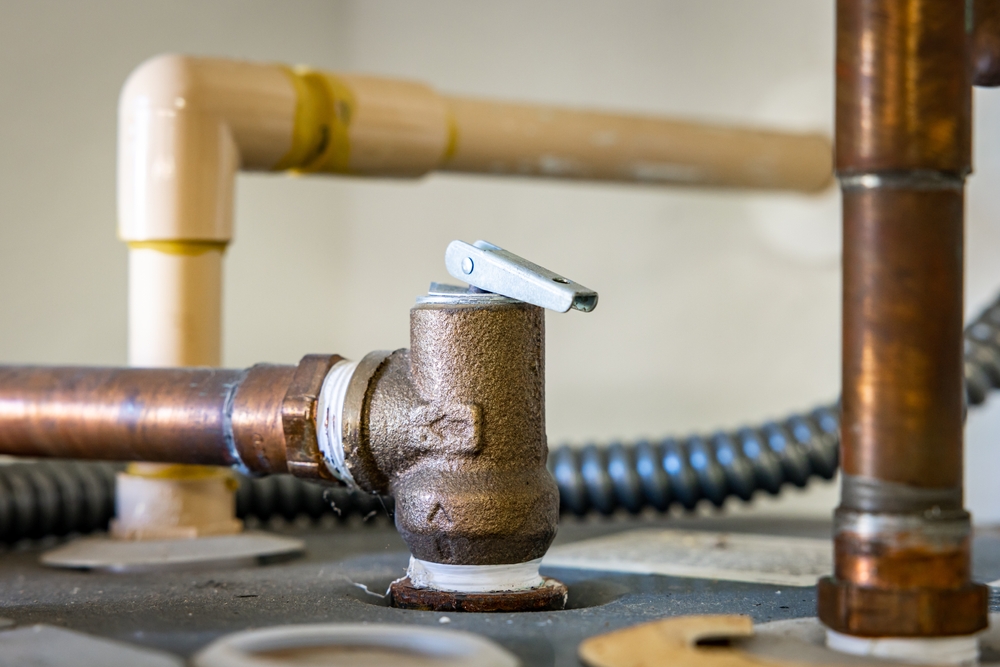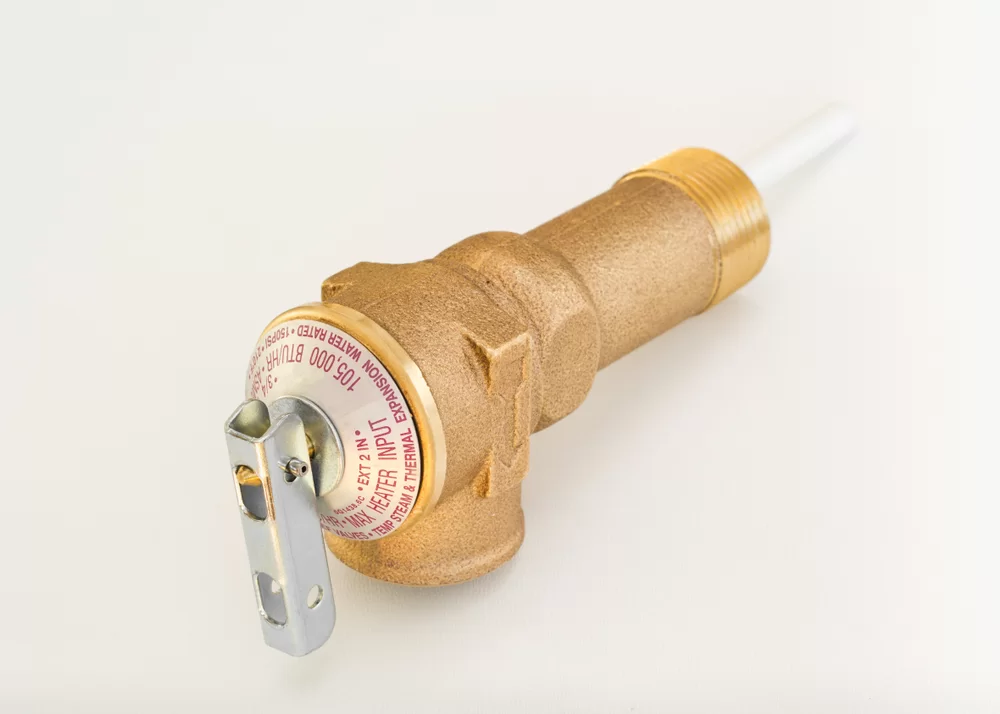Water heaters are essential appliances in our homes, providing us with hot water for showers, dishes, and more. But they also come with certain safety features, and one of the most critical components is the pressure relief valve, often referred to as the TPR (Temperature and Pressure Relief) valve, T&P valve, or the pop-off valve.
Below are six essential things you should know about the water heater overflow valve to ensure safety, prevent potential hazards, and extend the lifespan of your water heating system.
1. What Does a TPR Valve Do?
The pressure relief valve, commonly known as the TPR valve or T&P valve, is an essential link in your water heater’s safety. It’s designed to prevent excessive pressure and temperature buildup within the water heater tank. When the pressure or temperature exceeds safe limits, the TPR valve releases some water and steam, relieving the pressure and preventing the tank from bursting. This safeguard is essential for your safety and the longevity of your water heater.
2. Location of the TPR Valve

The TPR valve is typically located near the top of your water heater tank, often on the side or on the top of the tank. It features a discharge pipe that extends downward to safely direct the released hot water and steam away from the appliance and your living space. The pipe should terminate within six inches of the floor or into a suitable drain to prevent potential scalding or injury from the hot water.
3. Regular Maintenance and Testing
To ensure the TPR valve functions correctly, it’s important to perform regular maintenance and testing. This involves the following steps:
- At least once a year, test your water heater pop-off valve by gently lifting the lever at the top of the valve. Be prepared for hot water to release when you do this, so use caution and have a bucket or container to collect the water.
- The valve should operate smoothly, and when released, it should close firmly without any leakage.
- If the TPR valve fails to close completely or leaks after testing, it must be replaced immediately to maintain safety.
4. Warning Signs of a Faulty TPR Valve
A faulty TPR valve can compromise the safety of your water heater and home. Look out for these warning signs that indicate a potential issue with the TPR valve:
- Leaking TPR valve: If the TPR valve is constantly dripping or leaking, it may be a sign of excessive pressure or temperature inside the tank. This should be addressed promptly.
- No discharge when testing: If the TPR valve fails to discharge any water when tested, it could be blocked or malfunctioning.
- Corrosion or visible damage: Inspect the TPR valve regularly for signs of corrosion, visible damage, or wear and tear. A damaged valve should be replaced.
5. How to Replace Pressure Relief Valve on Water Heater
If you discover a faulty TPR valve, it’s essential to replace it as soon as possible. Replacing the valve is relatively straightforward, but it should be done carefully to ensure proper installation:
- Turn off the power and gas supply to the water heater.
- Shut off the cold water supply to the water heater.
- Attach a hose to the TPR valve‘s discharge pipe to direct any water that may release when removing the valve.
- Carefully remove the old TPR valve using a pipe wrench or pliers.
- Apply Teflon tape or pipe dope to the threads of the new TPR valve.
- Install the new valve and tighten it securely.
- Turn the cold water supply back on and fill the tank.
- Check for any leaks around the TPR valve.
- Lastly, turn the power and gas supply back on and ensure the water heats properly.
6. The Importance of Professional Inspection
While regular maintenance and testing are valuable for homeowners, professional inspection of your water heater and the TPR valve is highly recommended. A licensed plumber or technician can perform a comprehensive evaluation to ensure your water heater and safety features are functioning optimally. They will also check for potential issues such as excessive pressure or temperature, which could damage your water heater or pose a safety risk.
Contact FORD’S for Water Heater Maintenance and Replacement in Los Angeles
The water heater pressure relief valve is a critical component of your water heating system. Its role in preventing excessive pressure and temperature buildup within the tank is essential for safety and the proper functioning of your water heater. Regular testing and maintenance are necessary, as is the prompt replacement of a faulty TPR valve.
Always be aware of warning signs, perform regular checks, and seek professional inspection and assistance when needed. Contact FORD’S Plumbing & Heating to inspect or replace your water heater today.



















